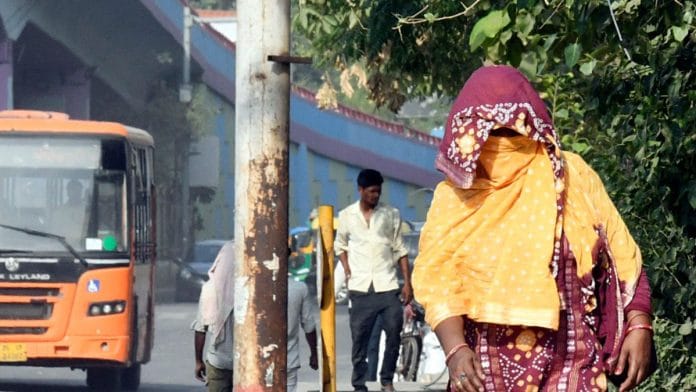New Delhi: Researchers from the Indian Institute of Technology-Bhubaneswar have found that urbanisation alone is responsible for 60 percent of the warming trend in Indian cities. What’s more, tier-2 cities in eastern India are the worst affected, according to the team from the institute’s School of Earth, Ocean and Climate Sciences
Urban centres are vulnerable to the compounding effects of both climate change and rapid urbanisation.
The scientists used MODIS Aqua satellite night-time land surface temperature (NLST) data — which is a measure of land surface heat radiation at night — along with elevation data from 2003 to 2020 to analyse temperature trends in 141 cities over two decades.
“Urbanisation is one of the most visible and irreversible human interventions modifying land use and land cover, and it is a key driver of socioeconomic change. Despite accounting for only ~1% of the land, cities house more than half of the world’s inhabitants,” the findings, published in Nature journal earlier this month, stated.
Also read: Northwest & central India under severe heat spell, high night time temperatures most worrying
Alarming rise in temperatures
The scientists advocate for a “differential approach” to effectively combat urban warming. This essentially means that each city requires customised solutions tailored to its specific challenges and conditions.
The study found that almost all the cities across India witnessed an increase in nighttime land surface temperature (NLST) trends, with an overall mean rate of 0.53+/-0.19 degrees Celsius per decade over this period.
Data shows that night temperatures have been rising across India, and it is not limited to cities. But, the rate at which cities are heating up is higher than that of non-urban areas. The spike was jarring in cities, which are warming at a rate of 0.2 ± 0.15 degrees Celsius per decade.
This highlights an alarming trend of cities experiencing enhanced warming — nearly double — relative to the entire country. Certain parts of the country also experienced warming at a much faster rate.
“The warming trend documented throughout India is not homogeneous. Some areas, including the northwestern, northeastern and southern regions, are undergoing a comparatively more pronounced increase in NLST than other parts of the country,” the study read.
Science behind urban heating
Experts explained that excess concretisation and diminishing green cover in cities lead to heat getting trapped, slowing down the cooling process. The daytime temperatures in an urban centre usually take longer to fall, as compared to agriculture or forest areas, increasing the heat stress of a region.
The study’s authors suggested that the government take a “differential approach” to tackling the problem of increased heat stress.
(Edited by Zinnia Ray Chaudhuri)
Also read: Paving way for all-weather & all-time imaging, Bengaluru space firm tests SAR on HAPS platform






